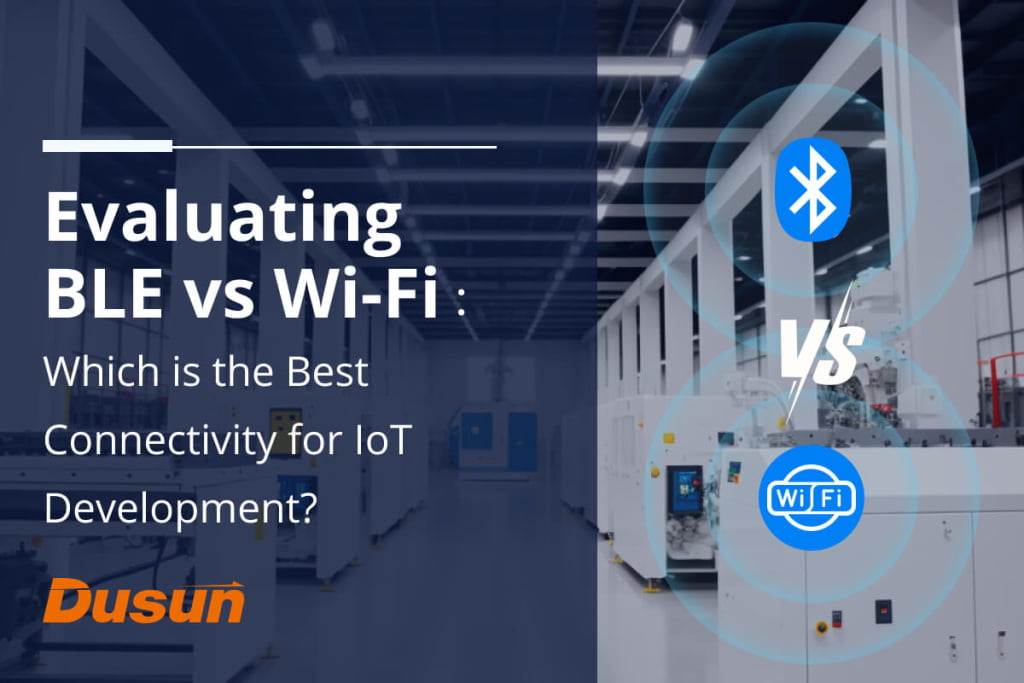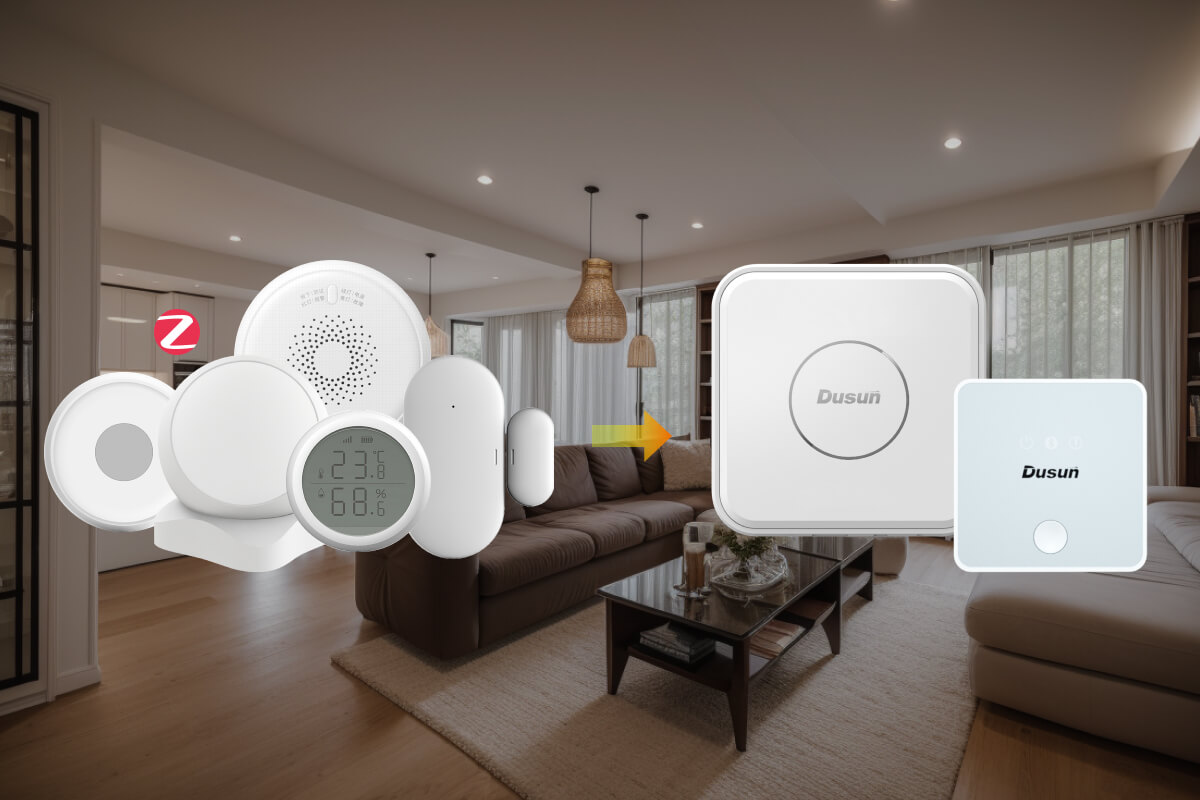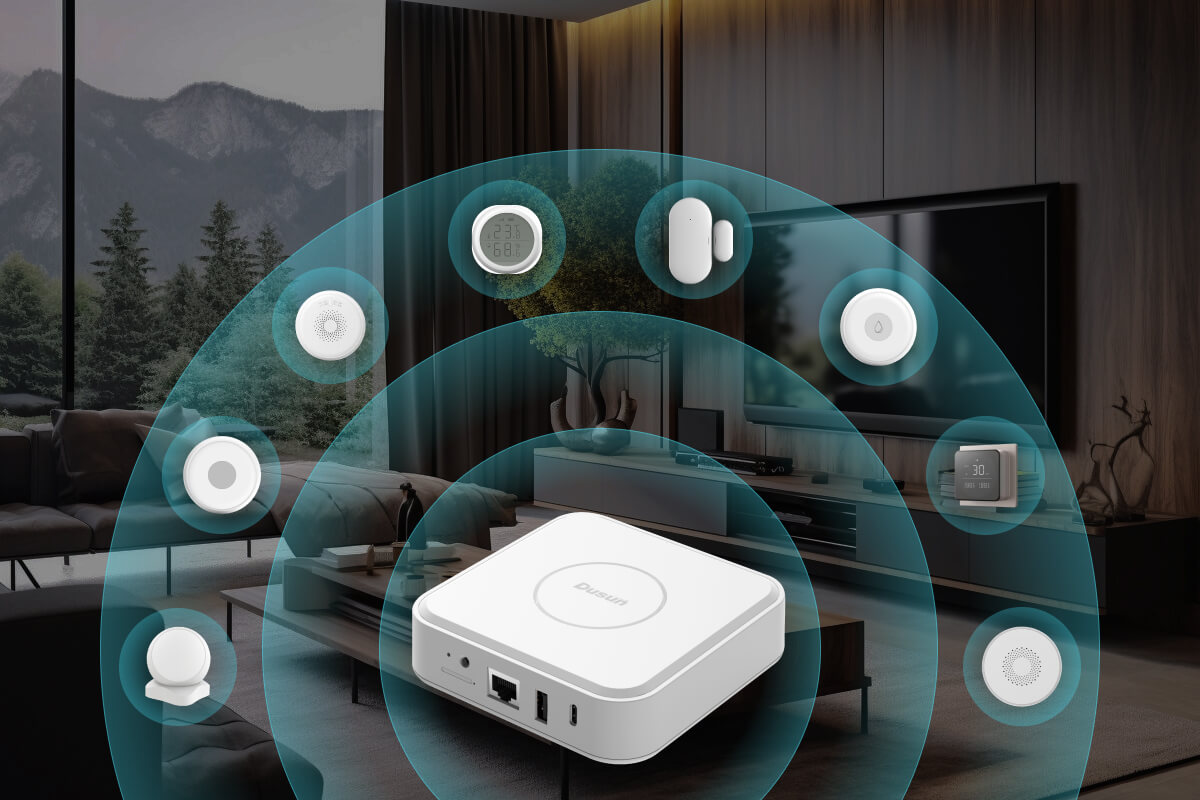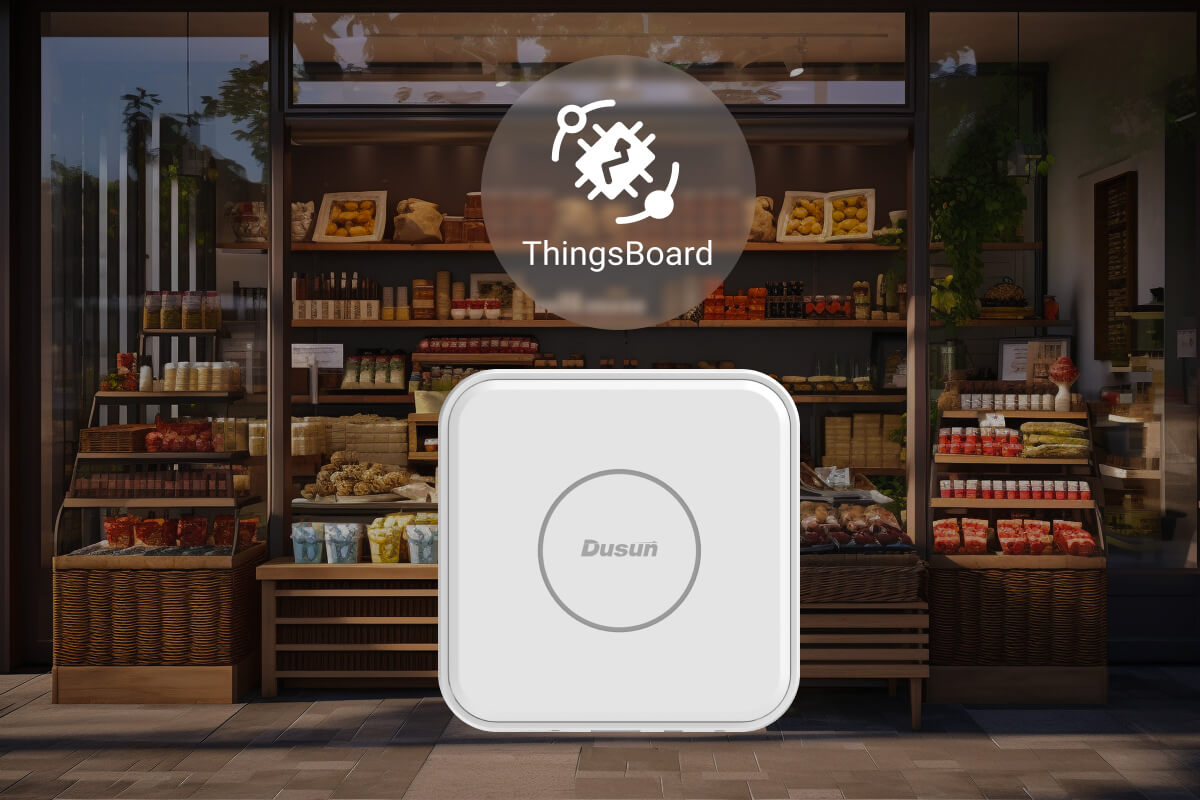The tech space is rapidly evolving, and IoT is at the heart of it. Two big players in this scene are BLE, a power-saving version of Bluetooth designed for short connections, and WiFi, which many of us use daily for internet access. By selecting the best IoT connectivity, businesses that wish to create their own IoT hardware stand to gain substantially from delivering IoT products that are innovative and ahead of the competition.
Both Bluetooth and Wi-Fi have their own advantages. Wi-Fi is best for projects involving several devices dispersed over greater distances and demanding high data rates, whereas Bluetooth excels in terms of battery consumption, security, and some dedicated usage. But before you make an decision on the best IoT protocols for a given IoT solution, let us study the two communication technologies in detail:
How Do BLE and Wi-Fi Different?
WiFi is a local wireless network that runs of the 802.11 standards set forth by the Institute of Electrical and Electronics Engineers (IEEE). Bluetooth Low Energy (Bluetooth LE, colloquially BLE, formerly marketed as Bluetooth Smart) is a wireless personal area network technology designed and marketed by the Bluetooth Special Interest Group (Bluetooth SIG).
Basic Introduction about Wi-Fi
WiFi enables two devices to interact with one another by using radio waves (RF). It is most commonly used to connect Internet routers to devices or connect two hardware components together. Both the 2.4GHz UHF and 5GHz SHF ISM radio bands are available for use with WiFi.
Basic Introduction about BLE
BLE is often used in small devices like fitness trackers, smart watches, and other connected devices to wirelessly communicate data without severely impacting the battery life. For data transfer, Bluetooth uses UHF radio waves.
Read further: different Bluetooth versions
| Bluetooth | Wi-Fi | |
| Owner | BSIG (Bluetooth Special Interest Group) | Wi-Fi Alliance |
| Frequency (MHz) | 2400 | 2.4-6 GHz |
| Range | 10-30 meters | 20-150 meters |
| Power Requirement | Low Power typically 100mW | 5-20 Watts |
| Security | 128 bit encryption | WPA-3 |
| Compatibility | Bluetooth devices | Wi-Fi devices |
Read further: wireless IoT protocols
Security & Privacy
When compared to Wi-Fi, BLE is always thought to have better security and data privacy. Both the transmitter and the receiver are aware of the data exposure in a peer-to-peer connection. Wi-Fi, in contrast, does not request user consent before exchanging data.
I’d like to use an analogy: for Wi-Fi, stores can get your phone’s data even if you didn’t say it’s okay. The only way to stop this is by turning off the WiFi on your phone. This is like saying “No” after someone’s already started doing something. For BLE, you have first to download an app and say it’s okay for the app to find BLE beacons. This is like saying “Yes” before anything happens. Online marketing has shown that people like to choose what data they share. But, if stores don’t care about this, WiFi can get data from more people because they don’t need an app.
To enhance the security, both take action to fix security holes. Bluetooth use AES 128-bit encryption for ensuring data security. With proper setup and the passkey ‘pairing method,’ BLE connections become securer.
Wi-Fi uses 256-bit encryption and has well-established security protocols including WEP, WPA, WPA2, and WPA3. WPA3 is the most advanced of them, which is perfect for the transfer of sensitive and important data.
Precision
BLE stand out for their precision in indoor positioning field. While Wi-Fi wasn’t designed primarily to gauge the distance between devices, but it can make attempts. both of them employ RSSI to pinpoint locations. BLE offers greater accuracy and consumes less power, making it possible to create a variety of BLE beacon hardware options. Here is a quick comparison of how well they performed in indoor positioning.
| technology | BLE | WiFi |
| Accuracy | Sub-meter if using BLE AoA technology | Approx. 10m |
| Range | Up to 100 m | Up to 500 m |
| Latency | Typically 3-5s to get location | Typically 3-5s to get location |
| Data rate | Up to 2 Mbps | Up to 1 GBps |
| Compatibility with mobile phones | yes | yes |
| Energy consumption | Very low | high |
| cost | Inexpensive hardware but high deployment expenses | expensive but always having existing infrastructure |
| maintenance | Low | high |
BLE is known to achieve a higher degree of location accuracy and requires significantly less power. Yet, many entities already possess Wi-Fi setups that can be repurposed for indoor positioning. Modern buildings, particularly workplaces, may include dozens or even of hundreds of access points to ensure robust WiFi access. In contrast, deploying BLE might necessitate the incorporation of fresh beacons and sensors.
Read further: BLE AoA locator implementation guide
So which one should be adopted? The choice ought to be based on your actual demands. Bluetooth is undoubtedly the most accurate option if you want to engage customers based on their position or offer an inside navigation experience.
Deployment Costs
Although linking low-power BLE sensors to the cloud seems like a great concept, we also need to take the ROI into account. Is the hassle worthwhile? To connect non-IP devices like sensors to the cloud, BLE requires gateways to be deployed strategically all around an area. In contrast, WiFi enables direct IoT sensor connections to IP networks. Since many commercial buildings already have WiFi installed, integrating IoT is possible without incurring additional expenses for new equipment. Due to this, WiFi may be more economical for larger deployments.
However, Bluetooth gateway is still the best choice in some specialized and specialized IoT applications (such as creating a secure and closed network or remote sensor installation). The combination of an existing WiFi network and a dedicated BLE network remains an option for decision-makers, and it frequently proves to be the more scalable and financially sensible option for large-scale IoT projects.
Speed
BLE focus is on low energy consumption, which reflects in its data rate. The typical BLE connection speed ranges from 1 Mbps to 2 Mbps, which is suitable for many IoT devices that only handle small amounts of data. Receiving brief data updates every few seconds is a task for which BLE is especially well suited. Examples include information about acceleration, temperature data from sensors, and heart rate monitors.
However, Wi-Fi could be used if you need to send data to a server immediately or have other bandwidth-intensive data needs. It’s utilized by many IoT devices. WiFi technology is capable of transmitting data at a speed of up to 1.3Gbps. This makes it the best choice for transferring larger files and data. But Wi-Fi networks use the TCP-IP protocol, which necessitates that every device get an IP address and authenticate itself on the network. Not all IoT devices will work with this. Wi-Fi networks, on the other hand, have extremely fast data throughput, but IoT devices don’t always require it.
Advantages of BLE over WiFi
As you can see there are numerous characteristics you should consider when choosing between BLE or Wi-Fi. If you wish to connect low-power IoT devices like simple sensors, BLE is a significantly more practical alternative because it is intended to deliver short data packets. There are distinct advantages when using BLE over WiFi:
Extended Battery Life
BLE has been specifically designed for minimal power consumption, making it a top choice for devices that rely on battery power. Be it a fitness tracker, a smartwatch, or a health monitor, BLE ensures that these devices don’t drain their batteries quickly. In contrast, WiFi, with its broader range and higher data transfer capabilities, tends to use more energy. This means devices using BLE can go longer between charges, providing users with more uninterrupted usage.
Instant Connection
Time is of the essence in the digital world. BLE stands out in its ability to establish connections almost instantly. This rapid connection time is vital for applications that require frequent, short bursts of data transfer, such as updating a heart rate on a fitness tracker or sending a command to a smart home device. While WiFi is incredibly robust and excellent for sustained connections, it can sometimes take longer to establish a connection, especially when first connecting to a network.
Cost-effectiveness in Certain Applications
Not all wireless applications require the high data rates and extended range WiFi provides. BLE can be a more cost-effective solution in scenarios where short-range, low-data rate communication suffices. The hardware for BLE is often cheaper, and its simpler setup means fewer costs related to infrastructure and maintenance. BLE presents a cost advantage for businesses and developers working on specific applications like beacons for an indoor location or simple sensor data collection without compromising performance.
Advantages of Wi-Fi over BLE
WiFi uses a high-bandwidth connectivity technology with a long range. It facilitates the creation of a direct internet connection and works with more fixed devices. Additionally, for the majority of projects, an intermediary device like a BLE to WiFi bridge will be needed because a Bluetooth device alone cannot transmit the data received. Continue reading to learn more about WiFi’s advantages versus BLE:
Higher data transfer rates
One of WiFi’s most notable strengths is its ability to quickly transfer large chunks of data. WiFi boasts significantly higher data transfer rates than BLE, whether updating firmware on a smart thermostat or sending high-resolution surveillance camera footage. This ensures seamless device communication, efficient updates, and an overall improved user experience.
Wider coverage areas
WiFi isn’t just about speed; it’s also about reach. The range of WiFi networks is generally much wider, encompassing entire houses, offices, or even large outdoor areas in some cases. This extended coverage makes it ideal for environments where users move around a lot, ensuring they remain connected.
Established Infrastructure and Widespread Adoption
Take a moment to consider the places you’ve accessed WiFi – homes, coffee shops, airports, hotels, and even some public transportation. Its established infrastructure and widespread adoption mean users can reliably find and connect to WiFi networks worldwide in many urban areas. This universality is not just convenient; it’s pivotal for activities that require steady, high-speed internet connections.
BLE and WiFi in IoT Development
As technology hurdles forward, BLE and WiFi stand at the forefront of wireless innovation. The coming years promise even lower energy consumption for BLE, making it a cornerstone for energy-efficient IoT devices. At the same time, its potential in location-based services could redefine sectors like retail and healthcare. Conversely, the evolution of WiFi is geared towards achieving lightning-fast speeds and broader ranges, addressing the modern consumer’s hunger for consistent, ultra-fast internet connectivity, especially in our remote-centric world.
IoT projects have different needs for things like power utilization, bandwidth use, and range. The key differentiator you need to tilt the odds of the success of your IoT project in your favor may be the connectivity of your devices through appropriate interoperable, effective connectivity solutions.
To connect with a Bluetooth-enabled device, an IoT device requires the following:
A microprocessor for Bluetooth to function, such as BLE SoCs;
A second device is necessary for pairing;
A battery or low-energy power source;
For the gadget to transmit a signal, it must be in close proximity.
An Wi-Fi IoT device needs to meet the following compatibility requirements for widespread adoption in IoT applications:
A WiFi SoC is required for WiFi to function;
A firmware to manage WiFi credentials and security;
A WiFi access point must be nearby for the devices to work;
Fixed and stationary IoT hubs are preferred to establish connectivity.
Converge BLE and Wi-Fi
Consumer demands are shaping this trajectory as much as the technological advancements themselves. A world that’s more connected than ever is driving the need for devices that are both powerful and efficient. People want BLE that integrates seamlessly into their daily lives and robust WiFi, no matter the number of devices or environmental challenges. Dusun IoT has a wide range Bluetooth WiFi Gateways to use them in conjunction, allowing users to use both future-proof technologies to build a a strong future.
Final Words
The future landscape of BLE and WiFi seems boundless. Adapting rapidly to our changing world, these technologies signal a future of intuitive, high-speed, and seamless connectivity. The promise is clear: a wireless world tailored to every individual need.
Reference:
https://en.wikipedia.org/wiki/Wifi
https://en.wikipedia.org/wiki/Bluetooth_Low_Energy
















